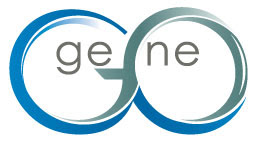This week, we’re featuring a head-to-head spotlight series between two of the most popular pathway analysis tools, GeneGO and Ingenuity. Both are available as BioGPS plugins (Ingenuity and GeneGO).
By the flip of a coin, GeneGO goes first…
In one tweet (140 characters) or less, introduce us to your website.
www.genego.com provides information on GeneGo’s products and services as well as useful publications, posters, case studies and a gallery of pathway maps.Why is your database unique and special?
GeneGo’s MetaBase was built by biologists to be used by bench scientists. Therefore the concept of network objects was born which allows for genes, proteins, PTM’s, isoforms, protein fusions, compounds, drugs, complexes to be mapped, curated and annotated. This is critical to being able to provide high quality manually curated content and multi step pathways for normal and disease.Why did you create your website?
To provide the life science community with information about our products but it is also to give back to the community. We advertise jobs not only for GeneGo but for anyone who has a systems biology, pathway, bioinformatics, cheminformatics or therapeutic job open. We also have a pathway map gallery with over 200 GeneGo proprietary pathway maps available free of charge and the ability to upload and download custom pathway maps built by GeneGo users. We also provide relevant publications, posters and case studies. We also use the site to let people know about our free on line training courses and provide educational materials.Who is your target audience?
Anyone in life science research, development, clinical, hospitals and physicians.What improvements are coming in the future?
We have a series of vignettes showing GeneGo products that highlight some of our software and content capabilities. The pathway map gallery is going to be a very valuable resource.
Plus we are going to provide free trial access to Eureka! Which is a fast easy to use Biology/Chemistry/Disease/Pathway Search Engine.
And now, the spotlight on Ingenuity.
In one tweet or less introduce us to your product.
IPA is a software application that helps researchers model, analyze, and understand the complex biological and chemical systems at the core of life science research.Why is IPA unique and special?
IPA is unique because it draws upon the Ingenuity Knowledge Base, a database of manually curated and structured biological and chemical relationships – which we call Findings. Why is this important? Ingenuity Findings, unlike flat text records or other databases, are highly structured to capture detailed biological context and relationships (such as sites of post-translational modifications, direction of change, experimental method, etc). This allows for more accuracy (for example, knowing how two search terms are actually related beyond mere co-occurrence in an article) and the ability to drill down into the exact nature of a biological relationship – details which are crucial for building relevant models and accelerating discovery research. Additionally, highly structured findings allow for computation and semantic consistency – all of which provides you with faster, better, more relevant information.Why did you create IPA?
There is still a significant hurdle for researchers when it comes to interpreting data, accessing high-quality scientific information and sharing that information.We created IPA to help researchers access relevant, detailed, and accurate knowledge that can be leveraged throughout the experimental lifecycle. For example, IPA can be used to create a testable model that will inform assay design. Once data is generated, IPA can then help researchers uncover novel insights from that data by quickly identifying relationships, mechanisms, functions, and pathways of relevance.Who is your target audience?
Life science researchers that have a focus on human health.What’s your greatest success story so far?
IPA has been used across numerous therapy areas, for many research goals, and supported multiple data types. To date, IPA has been cited in over 2,000 peer-reviewed publications. Our biggest success is helping scientists access relevant knowledge they need to further their research.What improvements are coming in the future?
We are regularly adding new content to the Ingenuity Knowledge Base including pathways, disease and drug information, and content from public sources such as DrugBank and Clinicaltrials.gov. We are adding more tools in IPA to help researchers rapidly access and view information, and share knowledge. For example, recently we added the ability to create custom pathway libraries via SBML pathway import. We are currently working on a novel approach for researchers to dynamically generate summary reports for pathways and molecules. They can quickly understand the broader biological context around a pathway or list of genes, through pathway descriptions, and tables of related drugs, and targets. Our new release comes out in November – so you should check out!Who is the team behind IPA?
The team who initially developed IPA came from Stanford (Dan Richards, Ramon Felciano, Raymond Cho, and Richard Chen). Today, implementation of their initial vision is carried out by a diverse team of biologists and chemists, ontologists, software developers, and usability experts.
Thanks to Julie Bryant from GeneGO and Heidi Bullock from Ingenuity for participating in our Spotlight series.



very interesting, but which one is better?
@Anonymous, Sorry, but that I think is something you'll have to decide for yourself. Both companies have great trial programs, so why not give them both a spin?
For my suggestions and couple my colleagues are find GeneGo pathways are more accurate than IPA.I'm working on prostate cancer.
yes.I too agree.
Genego pathway has more information comparatively Ingenuity.
More questions and answers are shown for Ingenuity. Why?
@Lynn, we submitted the same list of questions to both Julie and Heidi, and we invited them to answer the ones that they thought best highlighted their product. Completely their choice!